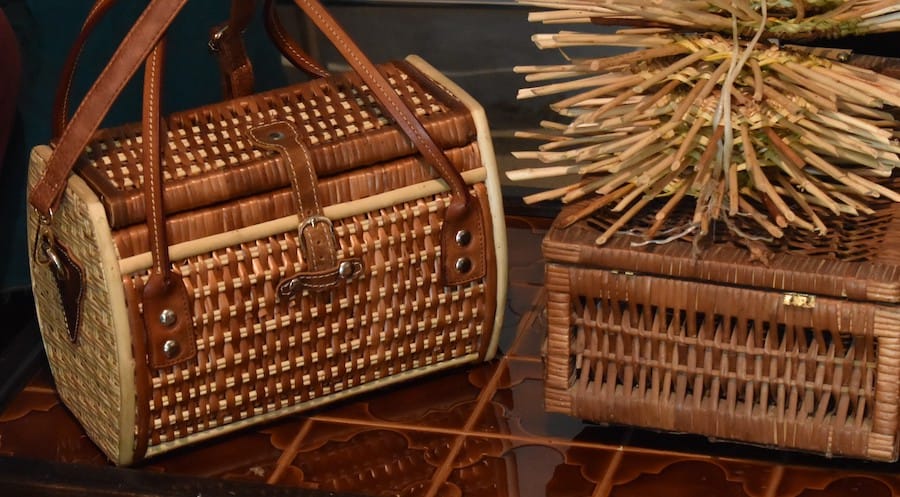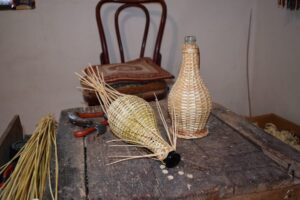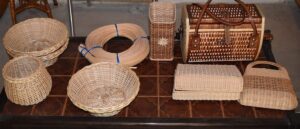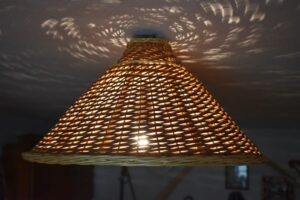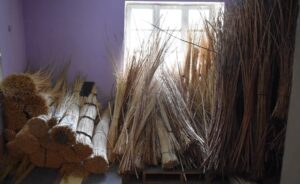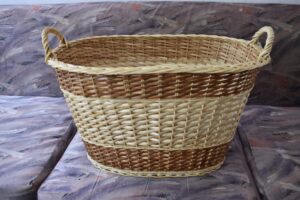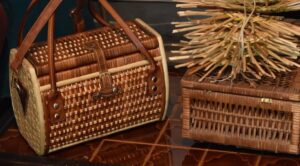Nowadays, the craft of birch bark processing reflects a combination of traditional and modern workmanship, with a wide variety of produce, such as baskets, bags, decorative accessories, etc.
The interested communities are both local buyers and foreign tourists who want to buy handicrafts.
The artisans find the raw material themselves and collect it once a year or they buy it from other people, while accessories are provided in the bazaar market and abroad.
Birch bark processing is an element passed down over centuries by members of the Roma community. In the Roma language, birch bark processing is called (Buti Vicaqiri).
Pëllumb Hysa is among the artisans who started this craft at an early age. He states he inherited it from his father and he was only 6 when he wove a “SEPETE” (hope chest, wicker hamper) for the first time. This craft has been passed down over generations: grandfather-father-son-grandson-great-grandson, hence an age-old tradition. His father, Izeti, was one of the first Roma people who in 1968 opened up the first business unit at the “Artistic Handicraft Enterprise”, called “Wickerwork Ward”. Not only this ward engaged members of the Roma community, but it also encompassed members of other communities, which witness the widespread of this craft and its preservation among other communities as well.
Pëllumbi further explains the process of product weaving (weaving or wrapping up a bottle). First, the birch bundles which they find by the rivers, are collected. This plant is harvested only during August and can afterward be used at any time. It is also important to interlace birches with each other so that they are as straight as one can. In addition to white birch, there is also another type of colored birch, which is also found during the winter period.
For a bottle to weave, 24 required birches are soaked in water.
Next, with a work tool, which is called a “tresh” (triple-cuts down razor knife), the birch is split into three lengths. It is soaked again into the water to soften (this process goes over and over during weaving) and then the birch is worked out by another tool, which separates the “pulp”, as the inner part of the birch is called, from the other clean outer bark coming off, which is called “veneer” and is used to weave the product.
The weaving of the element involves starting from the bottom of the bottle and going on upright to the bottleneck. This is where the process moves along with closing up and interweaving all thatch strands to achieve a sturdy weave.
Nowadays, this craft features the old and the new well merged, showing off a diverse product.
This craft runs through both male and female family lines.

